Test System and Methodology
All tests were performed on the following system:
- CPU: Intel i5 3570K @ 3.40GHz
- Motherboard: ASRock Z77 Extreme6
- Memory: Crucial Ballistix Sport XT 2x8GB DDR3-1600 @ 9-9-9-24
- Video Card: VisionTek Radeon R9 270X 2GB
- Monitor: ASUS VG248QE 144Hz
- System Storage:
- Crucial C300 256GB SSD
- Western Digital RE WD4000FYZ 4TB HDD
- Sound Card: Creative Sound Blaster X-Fi Titanium HD
- Operating System: Windows 7 SP1
Before we get into how the R9 270X performed in video benchmarks and games I want to take a moment to explain our methodology and why it is important to you. We’ve all experienced it before: you’re playing a game, and for some reason, the animations feel really jerky. You turn on the FPS counter and…it’s hovering at 30fps. Isn’t that a higher framerate than most movies? Why does the game feel jerky? To answer that question, you have to dig a bit deeper. FPS numbers are an average; the game (or in some cases, a benchmark tool like FRAPS) keeps track of how many frames are rendered in a second’s time, and reports that number back. It’s right there in the name: Frames Per Second. The trouble is, that number is only meaningful if every frame takes about the same amount of time to come out. Here’s an example of a short snippet of a game running on two hypothetical systems:



| Frametime | FPS Equivalent |
| 50ms | 20 FPS |
| 41.666ms | 24 FPS (film and TV) |
| 33.333ms | 30 FPS (most console games) |
| 16.667ms | 60 FPS (upper limit for most PC monitors) |
| 8.333ms | 120 FPS (upper limit for most 3D-capable PC monitors) |
Unless otherwise noted, all values are measured with FRAPS version 3.5.99. All tests are run at the monitor’s native resolution of 1920×1080 with Vsync disabled unless otherwise noted.
3DMark
Opting for brevity over clarity, FutureMark has ditched all suffixes for the latest iteration of their gaming benchmark, dubbing it simply “3DMark”. Here are the numbers for the Fire Strike and Fire Strike Extreme DX11 benchmarks:
Since you have to be a fairly odd sort of person—i.e. a hardware reviewer—to think that looping a benchmark demo is an entertaining use of your time, I won’t elaborate much here. The framerates on both benchmarks were rather choppy, but this has pretty much always been the case for any 3DMark benchmark that wasn’t laughably out of date.
BioShock Infinite
For this run we used the game’s built in benchmarking utility, which runs you through a sampling of the game’s early areas, including both indoor and outdoor areas. FPS numbers were reported by the benchmarking utility. Since the utility records FPS every 0.5 seconds, this will give us a better look at overall smoothness.
While there was some jitter on scene transitions, overall the framerates stayed relatively constant, which is what we like to see.
As the overall averages show, while Depth of Field did bring down the average framerates noticeably, performance still stayed well within acceptable bounds. This card will have no trouble running this game with all the bells and whistles turned on.
Borderlands 2
Given how random this game is, getting a consistently repeatable run is difficult. For this run, we took a stroll around Sanctuary:
Here we kept Vsync and the built in framerate limiter off, turned FXAA on, and cranked all detail settings up to maximum, with the exception of PhysX effects, which were kept at Low.
Performance was excellent as you’d expect, with most frametimes hovering around the magic 8ms mark. There were very few dips below 16ms, which means that smoothness ranged from good to excellent without sacrificing visual fidelity.
Crysis 3
Turning now to somewhat more strenuous tasks, let’s give Crysis 3 a whirl. For this run we went through the opening minutes of the mission titled Safeties Off, which makes heavy use of dynamic lights, water effects, foliage, and all the other graphical goodies this series is known for.
We ran the same segment twice, once at High detail and once at Very High detail. Bumping up AA degraded performance significantly regardless of detail level, and didn’t noticeably improve visual quality, so we left it at SMAA 1X for both runs.
While framerate averages were consistently high across both runs, there was noticeably more jitter in the Very High run, which became especially prominent during fast action sequences. In both cases the game played acceptably fast; whether you value visual detail or smoothness of motion more is really up to you.




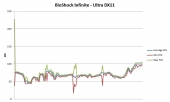

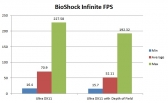

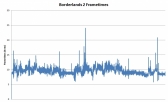

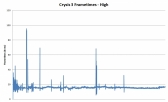
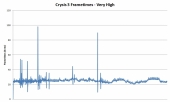

[…] VisionTek R9 270X 2GB Video Card | TechwareLabs – Part 2 Die haben auch nur 5100 Punkte ● Intel I5 3570k (4,5Ghz -1.21v) @Enermax ETS-T40-BK ● Gigabyte Z77X-UD3H rev 1.2 – Avexir Core 1600MHz 8GiB Blue LED's ● Gainward GTX 780 Phantom GLH (1228/1600MHz -1.175v) ● Samsung SSD EVO 250GB – Corsair RM550 ● Asus Xonar DGX – QPAD QH-90 – QPAD MK-80 MX Blue – Tt eSPORTS Theron Zitieren […]
[…] VisionTek Radeon R9 270X 2GB Gaming Graphics Card @ TechwareLabs.com […]
[…] VisionTek Radeon R9 270X 2GB Gaming Graphics Card @ TechwareLabs.com […]
[…] VisionTek Radeon R9 270X 2GB Gaming Graphics Card @ TechwareLabs.com […]
[…] VisionTek Radeon R9 270X 2GB Gaming Graphics Card @ TechwareLabs.com […]